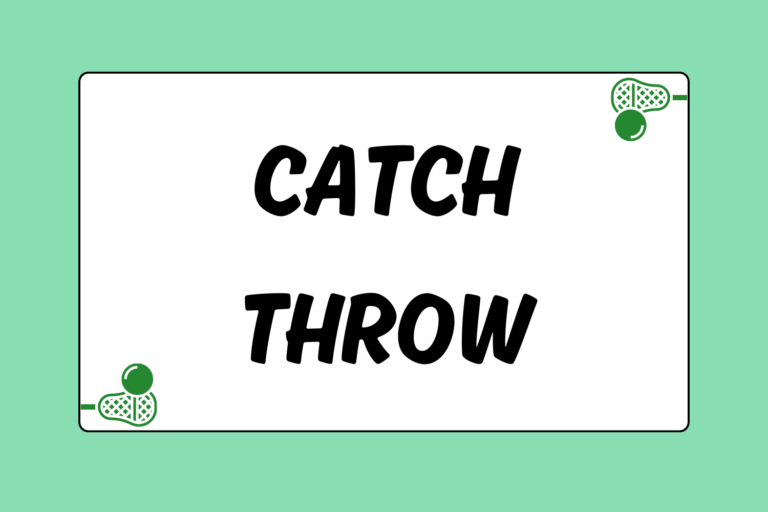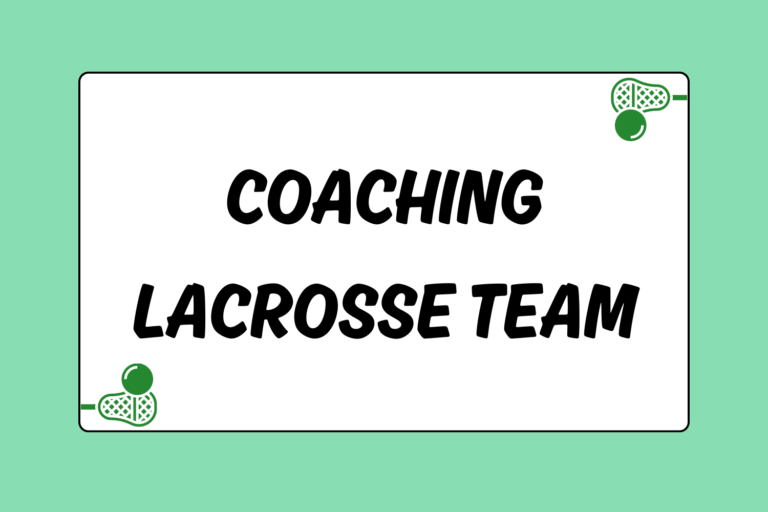One of the unique aspects of lacrosse is the amount of area in play behind each team’s goal. In a number of other sports, such as basketball and soccer, there is no room to operate behind the goal. In lacrosse though, there is a 15-yard separation between the back of the cage and the end line, so offensive players make use of this area for dodging and feeding.
Whether you’re an attackman or a midfielder, the area behind the goal is prime real estate for any offensive player. This guide helps you sharpen your skills and explains how to carry the ball down to X where you can add a whole new angle to your offensive game.
Stick Security
In general, the best defender on each team guards the offensive player that plays behind the goal. If you play attack, you’re going to be marked by a long-pole who throws vicious checks and tries to dislodge the ball from your pocket. Regardless of your position, though, protecting your stick and keeping possession of the ball is very important when operating around X.
The first step to better stick protection is to switch to a one-handed cradle when carrying the ball or engaging a defender on a dodge. This technique allows you to cradle parallel to your torso while keeping the stick tighter to the body. Additionally, one-handed cradles give you a bit of extra space to operate because you can use your free hand.
More Protection, Less Options
Keep in mind that one-handed cradles take away your ability to feed or shoot. You’ll have to place your bottom hand back on the stick while protecting yourself from the defender(s) when you want to feed or shoot the ball. It’s not going to be pretty if you are double-teamed with only one hand on the stick. More often than not, you will end up on the ground with your stick by your side and the other team breaking up-field with the ball. No one wants to hear the dreaded “Yard sale!!!” call from the fans and other team. Here are a few tips to avoid turning the ball over:
- When dodging from X, make your move and keep your body between your stick as you get past the first defender.
- Put your bottom hand back on the end of the stick once you’re in the open field.
- Keep the stick tight to your body and keep your eyes looking up-field to ensure that no slides are coming your way.
- Be ready to get rid of the ball in a hurry, and know where your help is on the field as they wait for the ball.
Feeding Areas
Operating behind the cage is an extremely effective offensive approach that creates opportunities to feed the ball. The player at X is the quarterback of the offense, and should be looking to feed the ball rather than score. Similar to how a point guard in basketball will probably get crushed by a huge shot blocker if he drives deep into the lane without passing, an X attackman will likely lose the ball if he doesn’t feed it to a teammate. Take advantage of the defense as they slide, and rack up the assists once you beat your defender.
The area directly behind the cage is not a good spot for feeding because the goal itself and an active goalie can interfere with feeding lanes. However, a world of opportunities opens up for you when you get to the sides of the goal. Beating your defender to either side while pushing towards the cage should trigger a defensive slide. The slide will either come from the crease or from an adjacent defender. Assuming you don’t have the time or space to get to the front of the goal, ready yourself to quickly pass the ball to the area where the defender is sliding from. Do your best to make eye contact with any potential recipient of a feed, and don’t be shy about throwing a hard pass that won’t get picked off.
Look for the Two-slide
With a crease slide, there should also be a 2-slide coming from the backside of the play. Your first look is always to feed the crease, but a good defense will have that covered in time. This makes the offensive player whose defender is the 2-slide the most dangerous man on the field. If the 2-slide gets to the crease in time, look to make a star-pass over the defense to the backside midfielder who should be standing wide open ready to take a time and room shot.
Against an adjacent-sliding defense, your feeds should be to the wing attackmen. Pushing cage to either side of the crease, look to draw a wing defender and immediately dump the ball to an attackman either setting up for a quick time and room shot, or on a backdoor cut behind his defender to the crease area.
Inverts
Attackmen aren’t the only players who can set up shop behind the net. Sometimes coaches will call for an invert play, where a midfielder carries the ball down below goal line extended (GLE) and looks to exploit a mismatch against a short-stick defender.
This goal counted since it crossed the plain of the goal line before his feet touched down in the crease. It earned the nickname “Air Gait” because Gait’s silhouette looked exactly like that of Michael Jordan in his signature pose. Crease dives are now illegal in NCAA lacrosse.
The first key to capitalizing on an invert is to make sure the other offensive players occupy their defenders and make it difficult for the defense to slide to the ball. Players off the ball should be cutting into space and making sure their defender has to honor them as an offensive threat. Standing around and watching the ball takes someone completely out of the play and essentially nullifies the advantage the offense has in the mismatch.
Once your offensive teammates are set, follow these tips to find your way to the cage off an invert:
- Look to get topside on your defender: Short-stick defenders have a tough time using leverage to prevent an offensive player from getting topside.
- Scan the field: Keep your eyes up, even if you’re bull dodging through a defender. Defensive help can come at any time and you must be ready to move the ball.
- Master the inside roll: With defenders doing everything they can to prevent you from going topside, a quick inside roll can get you to the cage in a hurry.
Play with confidence if the coach calls your number on an invert. Clearly, the coach feels you can exploit a weak defender and set up the team with a good goal-scoring chance. Keep in mind the tips discussed here, and the rest should take care of itself. Remember, feeding is easiest when attacking the goal from behind, so always make it your number one priority to set up teammates for success with a nifty feed.
Amazingly True Story
There hasn’t always been a crease-diving rule in NCAA lacrosse. That is, not until the Gait brothers made it to Syracuse in the late 1980’s. Gary Gait first pulled off the famous “Air Gait” in a 1988 NCAA quarterfinal game against the University of Pennsylvania. Running directly at the back of the goal, Gary Gait jumped towards the top crossbar and stuffed the ball under the bar before his feet hit the ground.
X Marks the Spot
Playing behind the goal means understanding how to work at X — everything starts there. Dodging your man, readying to feed, and pressing cage all starts at X. Watch and study premier attackmen, and you’ll notice that they do most of their damage immediately after going through the X spot. Work on your game and learn the intricacies of playing behind the goal, and it will make you twice the player you were before!





